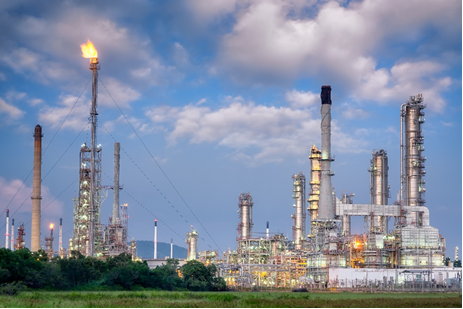
What is Flaring, why and how it happens and why we need to minimize it?
Gas and liquid flaring is an essential safety measure to burn the hydrocarbons and other harmful gases and liquids through a dedicated piping network and a combustion device called “flare” used in industrial plants such as petroleum refineries, chemical plants, natural gas processing plants as well as at oil or gas production sites having oil wells, gas wells, offshore oil and gas rigs and landfills. This method of disposal prevents dangerous over pressures in plant equipment by diverting gas and liquids for safe burning and also safely dispose the natural gas which cannot be piped to consumers during oil production.
The recent data released by the Global Gas Flaring Reduction Partnership (GGFR), a World Bank-led organization comprised of oil companies, governments, and international institutions shows 147 billion cubic meters (bcm) of natural gas was estimated flared in 2015 up from 145 bcm in 2014 and 141 bcm in 2013.
The above data does not include the flaring from refineries, petrochemical plants, landfills etc which could be significant. Many environmentally responsible companies over the years have tried to minimize the flaring however still daily flaring consists of purge gas, daily leakages, design, and operational swings and design limitations. This is because the flare gas recovery systems are expensive and difficult to operate and there are no mandatory regulations in many countries.
The impact of flaring is of local and global concern. Gas flaring is one of the most challenging energy and environmental problems the world is facing today both regionally and globally. For example, flaring/venting during oil production operations emits CO2, methane and other forms of gases which contribute to global warming causing climate change, and this affects the environmental quality and health of the vicinity of the flares. Hence it makes sense to avoid the unnecessary release of carbon dioxide or methane into the atmosphere, where practicable.
Why you need a REAL TIME FLARE MONITORING SYSTEM
In the current context, environmentally responsible production is a corporate goal of every company. Further, in global context stricter environmental regulations for flaring and greenhouse gases through UNFCCC are imposed. Hence the current legislative trends emerging from Global Methane Initiatives, COP21 in Paris indicates new regulations on emission reductions will be imposed in future and real time monitoring systems will be mandated soon.
What is a REAL TIME FLARE MONITORING SYSTEM
It is the intent of Flare Monitoring System to provide custom and predesigned analytical tools utilizing existing infrastructure, which measures and reports accurately the gas emissions and identifies sources in real time via a corporate wide web based system. By corporate wise web based system, companies will have wider and clear vision of their Flaring Stacks and Devices in facilities, which will be very important for taking preventing and corrective actions based on system generated reports and KPIs.
Industry proven system
Flare Monitoring Solution ( FMS ) for Khafji Joint Operations, Saudi Arabia:
KJO, a partnership of Kuwait Gulf Oil Co. (KGOC) and Aramco Gulf Oil Co. (AGOC), manages offshore operations in a neutral zone between Kuwait and Saudi Arabia.
In addition to implementation and design of analysis and reporting system with configurable KPIs, Flare Monitoring System created a platform to assist plant management in making good decisions to identify and analyze root causes for flaring, reducing gas emission as well meeting standard rule, regulation and goals.
FMS provides effective systems to comply NCEC requirements. Incorporates custom and predesigned analytical tools utilizing existing infrastructure, which measures and reports the gas flaring and identifies sources in real-time via a corporate-wide web-based system. Hence with this system, KJO has a wider and clear vision of their flares along with sources in facilities, which will be very important for continuous monitoring and taking preventive and corrective actions based on system-generated real‐time and periodic reports and KPIs.
Saudi Aramco Experience
